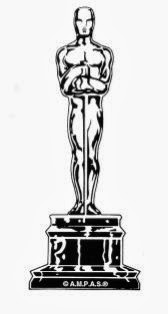Background
During my cell unit students learn that cells are alive unto themselves and they memorize the names of about 10 of the most common cell organelles alongside a simple 1-2 word description of the role each plays for the greater good of the cell. For example, the nucleus is "the control center" and the ribosome is the "protein factory."To add some creativity to the task, I then ask students to create 60 second persuasive speeches where they nominate an organelle to receive The Most Important Organelle Anatomy Award (a spoof off the Academy Awards). Students learn about the organelles the first day, work on the speeches the second day, and present their speeches the third day. A quick, 3 day project-based learning experience incorporating problem solving, creativity, persuasive arguments, and oral presentation skills.
How D2L saved me
My plan was to do this 3 day project the first three days back from spring break, Mon-Wednesday. Little beknowst to me I was going to have a 102F temp and deep-chested coughing fits on Sunday night. However, I had already loaded D2L with the instructions, the lecture, the examples, and the rubrics and thought in a fever-induced moment,"Let's see if they can do it anyway." Here was the subplan I left on D2L.
What was going to happen on Wednesday?
Monday and Tuesday came and went. I didn't show up on my classroom either day, received no updates from a sub, and only received 2 student emails that I quickly replied to. I had no idea what I was going to see when I returned to my classroom. Would I find classes ready to present? Or would I find students who struggled, gave up, and screwed around for two days meaning I'd have to start from scratch on Thursday.
Take a look for your self. Here's a video I made of some of the student examples that were presented on Wednesday.
I was very impressed with my students.
They didn't need the sub's help one iota.
They took their notes, read the directions, looked at last year's examples, helped each other, got creative, wrote some scripts, made some funny speeches, and had a great time.
And I didn't even have to be there.
Not that's not to say that my having been there would have been nice.
I'm sure my presence would have helped ease the anxiety of quite a few students and I could have lent some advice that likely would have improved the product of quite a few speeches I did receive.
However, a large percentage of my students were completely successful without me holding their hands.
And we were able to continue on with our unit without going back over the days "lost" with the sub.
On top of that 7 students were absent those days just like I was, and 2 of them, Autumn and Jena, showed up on Wednesday with finished A-level products because they were able to access everything they needed from D2L at home and had completed their projects.
Boom.
Concluding Thoughts
- It's nice to have class proceed as normal during sub days rather than having to create a "filler" lesson.
- It's nice to see students complete work from home when absent and be completely caught up upon their return.
- It's nice to know students can not only complete a lesson, but can complete a problem-based learning assignment that required a lot of creativity, problem-solving, and spunk when you're gone and not just fill out a simple worksheet.
- Thank you D2L. And thank you Flipped Classroom.


















